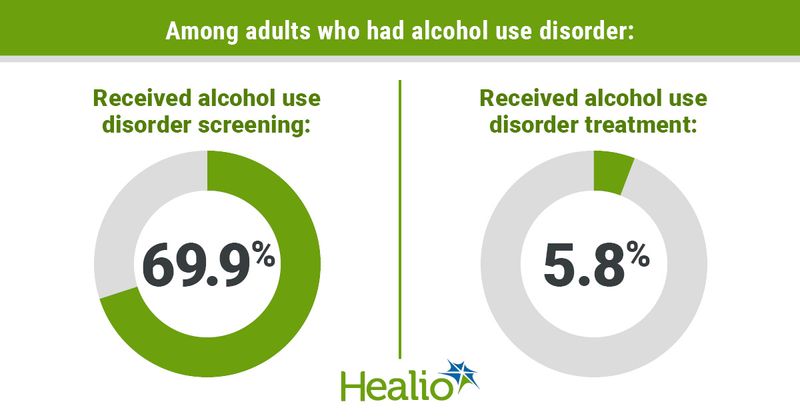Despite high rates of alcohol use screening, few receive treatment
Adults with alcohol use disorder often used health care services and received alcohol use screening, but few were referred to or received treatment, according to recent data.
The “significant implementation gap in [alcohol use disorder] treatment highlights the need for an improved understanding of barriers to treatment,” Carrie M. Mintz, MD, an assistant professor of psychiatry at the Washington University School of Medicine in St. Louis, and colleagues wrote. “A cascade of care model is a useful framework for identifying gaps in a care trajectory for illnesses.”

Mintz and colleagues used data from the 2015 to 2019 National Survey on Drug Use and Health to determine the prevalence of alcohol use disorder (AUD) among U.S. adults as well as the the proportion of adults with AUD who used health care services in the previous 12 months; were screened for alcohol use; received a brief intervention for alcohol misuse; received information about treatment; and received treatment for AUD.
The weighted prevalence of AUD among the 214,505-person sample was 7.8% (95% CI, 7.6-8). Among 21,270 adults with AUD, 14,134 had mild AUD, 4,178 had moderate AUD and 2,958 had severe AUD.
Although 81.4% (95% CI, 80.7-82.1) of adults with AUD used health care services in the previous 12 months and 69.9% (95% CI, 68.9-70.8) were screened for alcohol use, only 11.6% (95% CI, 11.0-12.2) received a brief intervention; 5.1% (95% CI, 4.6-5.6) were referred to treatment and 5.8% (95% CI, 5.4-6.3) received treatment.
“The implementation gap between health care screening for alcohol misuse and receipt of treatment highlights the fact that AUD treatment has historically been separated from mainstream health care settings and instead delivered via specialty care settings, including rehabilitation facilities, mental health centers, and non-health care settings such as peer support groups,” the researchers wrote. “We therefore advocate for increased engagement of this high-risk population by implementing evidence-based treatment in the primary care setting.”
